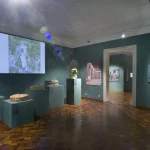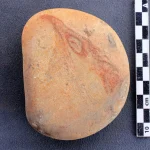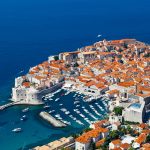A truly sensational and unique archaeological discovery in Eastern Croatia.
As Goran Rihelj/HR Turizam writes on the 16th of October, 2019, archaeologists from the City Museum of Vinkovci and the Institute of Archaeology from Zagreb presented the results of research they’ve been conducting at the site in Stari Jankovci (Vukovar-Srijem) yesterday.
In tumulus 1, that is, an earthen mound about forty metres or so in diameter and about one metre high, a large burial chamber was found, into which a Roman chariot with two wheels and the bones of the accompanying horses were laid.
Research on this site initially began back in 2017, and these are the first major discoveries, significant to the extent that we have not had anything similar in Croatia so far.
The custom of burial under earthen mounds or tumulas was an exceptional way of performing a burial ritual during the Roman period in the south of the Pannonian plain, and the custom is associated with extremely wealthy families who played a prominent role in the administrative, social and economic life of the province of Pannonia.
By locating an earthen mound along one of the most important thoroughfares of the Roman Empire, which connected the Apennine Peninsula with Pannonia and the Balkans and Asia Minor, the aristocratic family settled near Cibal wanted to show to all travellers who travelled along this road their status and the likely abundant wealth they possessed.
”The most significant discovery is the discovery of a Roman chariot with the skeletons of the harnessed horses, that is, the first archaeologically excavated ancient burial place with such carriages in Croatia,” says the curator at the Boris Kratofil Museum of Vinkovci for Novosti.hr.
The investigated tomb, as Kratofil points out, is estimated to date from the 3rd century AD, which is one of the youngest examples of this type of funeral custom. The complex process of documenting the findings, which has been conducted since the beginning of the research, will bring numerous new insights into the construction of Roman circuits, which will ultimately enable their complete reconstruction and presentation in the permanent exhibition of the City Museum of Vinkovci.
This site has aroused great interest of the profession throughout Croatia, and many archeologists from all over the country have come to see what is happening in Stari Jankovci for themselves.
”This is a sensational, unique discovery in Croatia, as this is the first time in our country that this complex funeral custom from the times of Antiquity has been archaeologically investigated and documented.
Now, the long process of restoration and conservation follows, but so does the complete analysis of what’s been found. I hope that in a few years we’ll know more about the family whose members were buried in this area all that time ago, 1,800 years ago.
We’re also more interested in the horses themselves, that is, whether they were bred here or came from other parts of the empire, and what will tell us more about the very importance and the level of wealth of this family. We will achieve this through cooperation with domestic as well as numerous European institutions,” said Marko Dizdar, Director of the Institute of Archeology.
Vinkovci, as the oldest city in Europe, whose territory has been continuously inhabited for more than 8,300 years, has kept many of its secrets underground, and since 1982, the entire area of Vinkovci has been declared a protected archeological zone. Otherwise, it is less known that two Roman emperors, Valens and Valentinian, were born in Vinkovci.
Make sure to follow our dedicated lifestyle page for much more.











